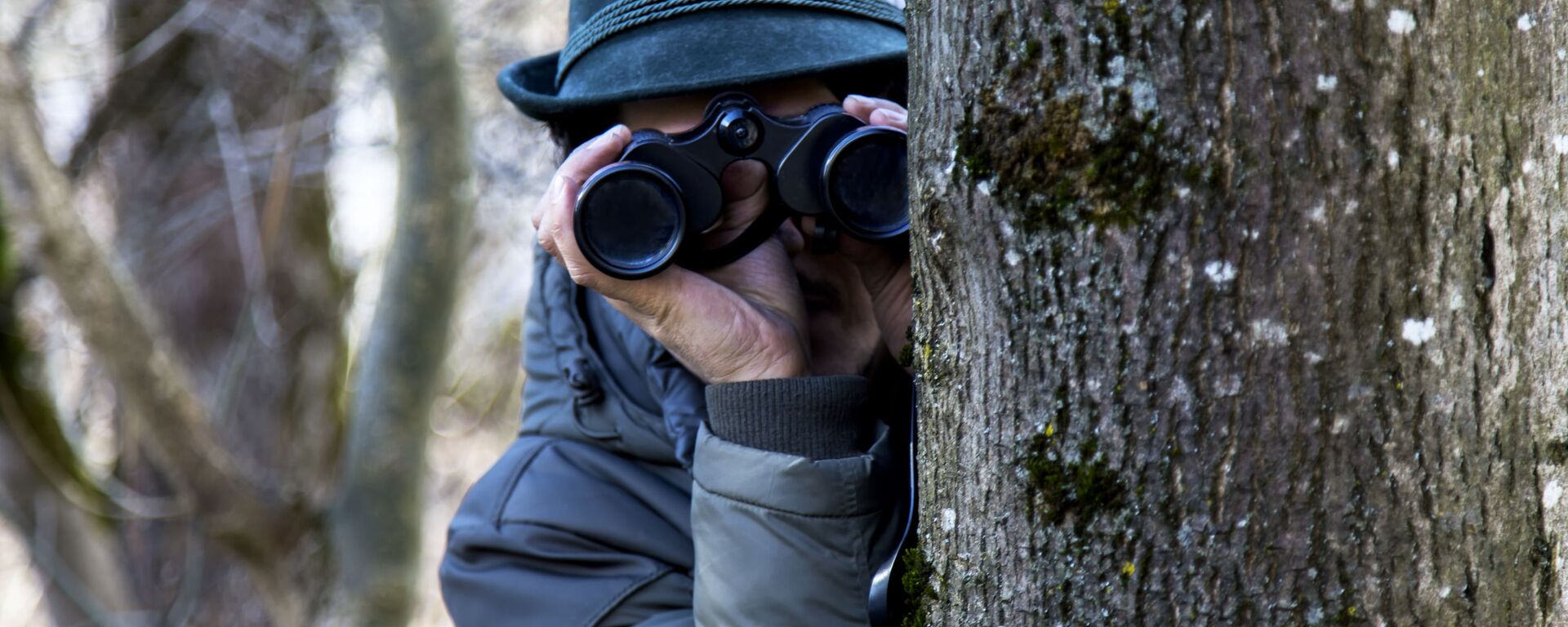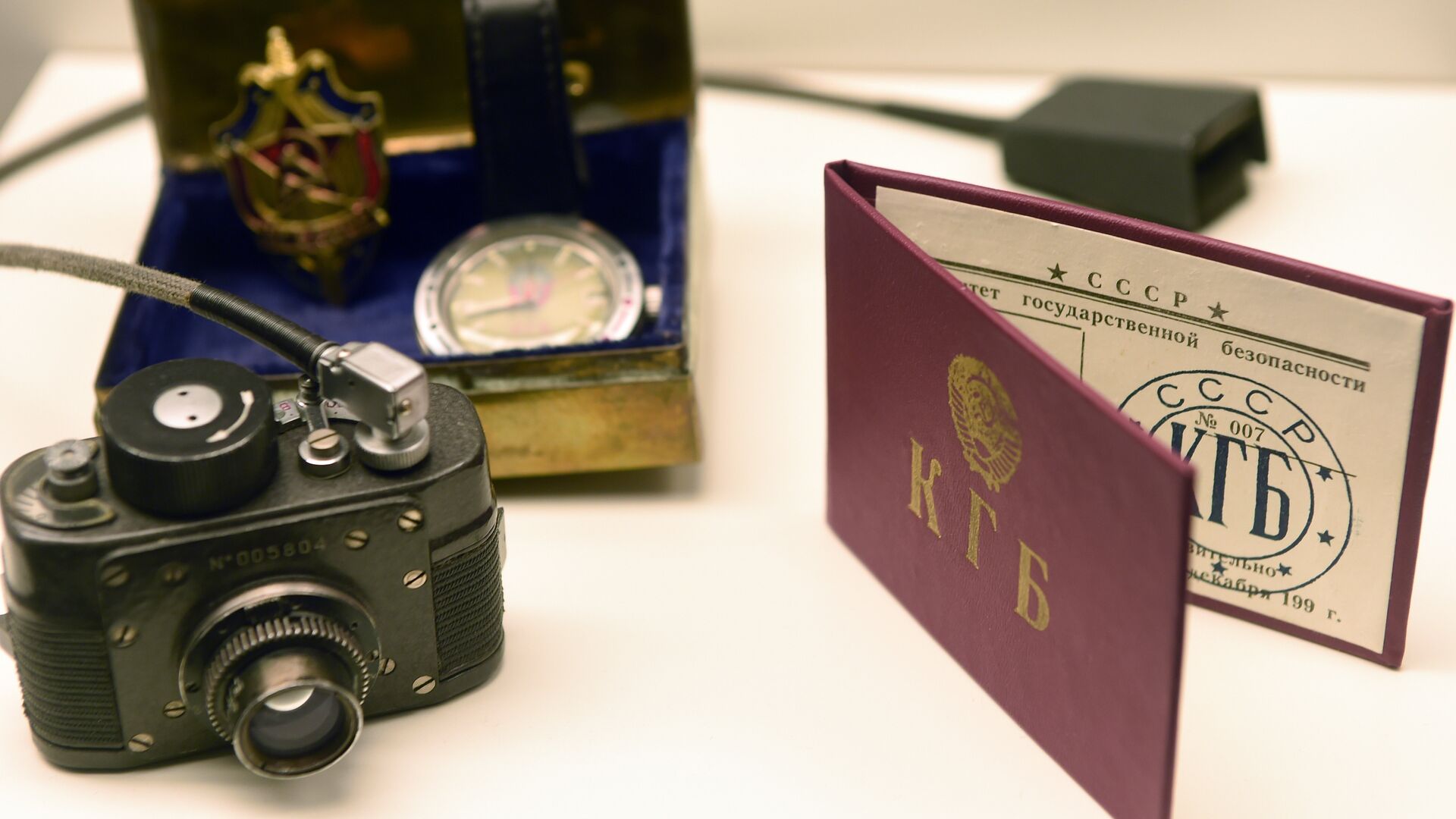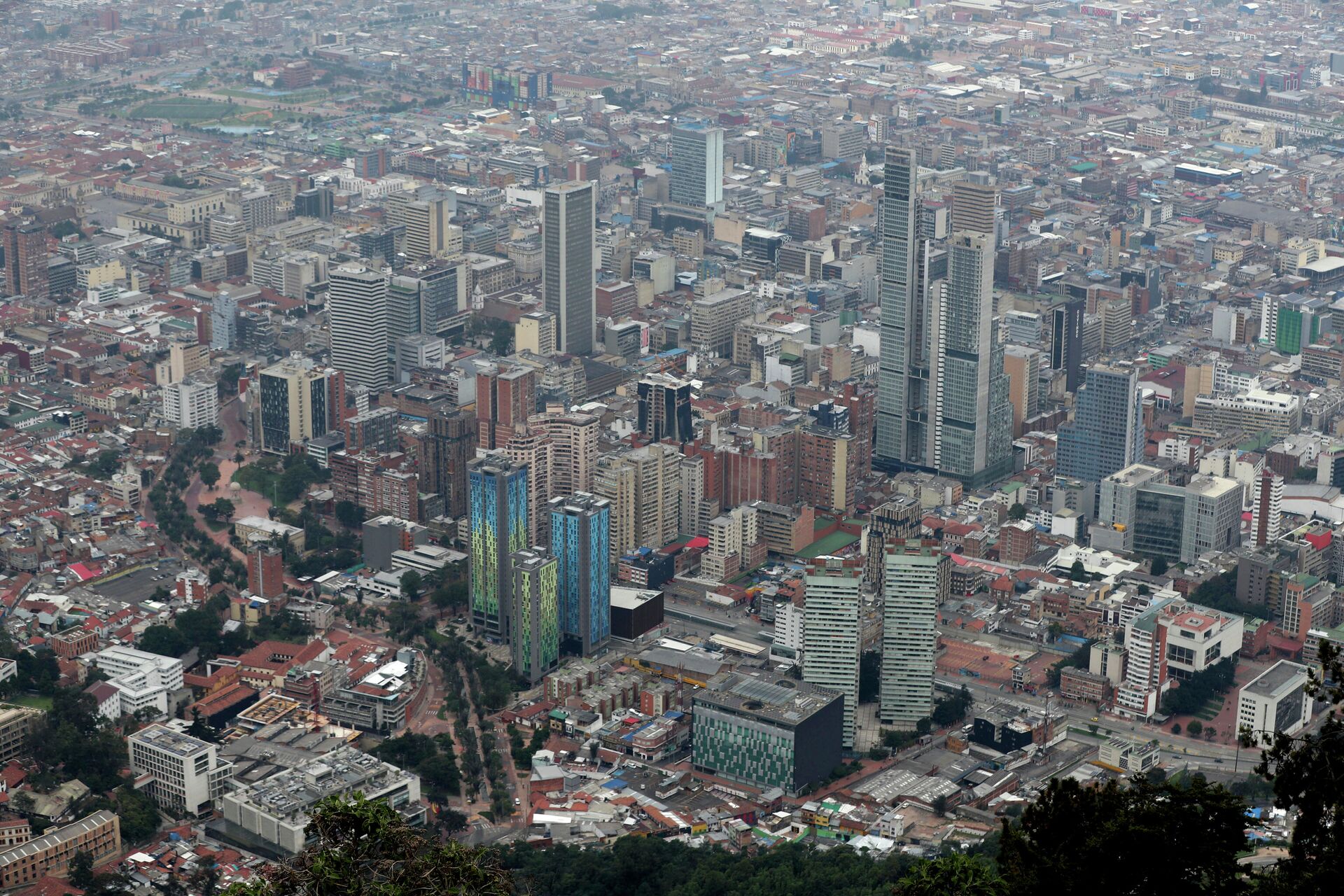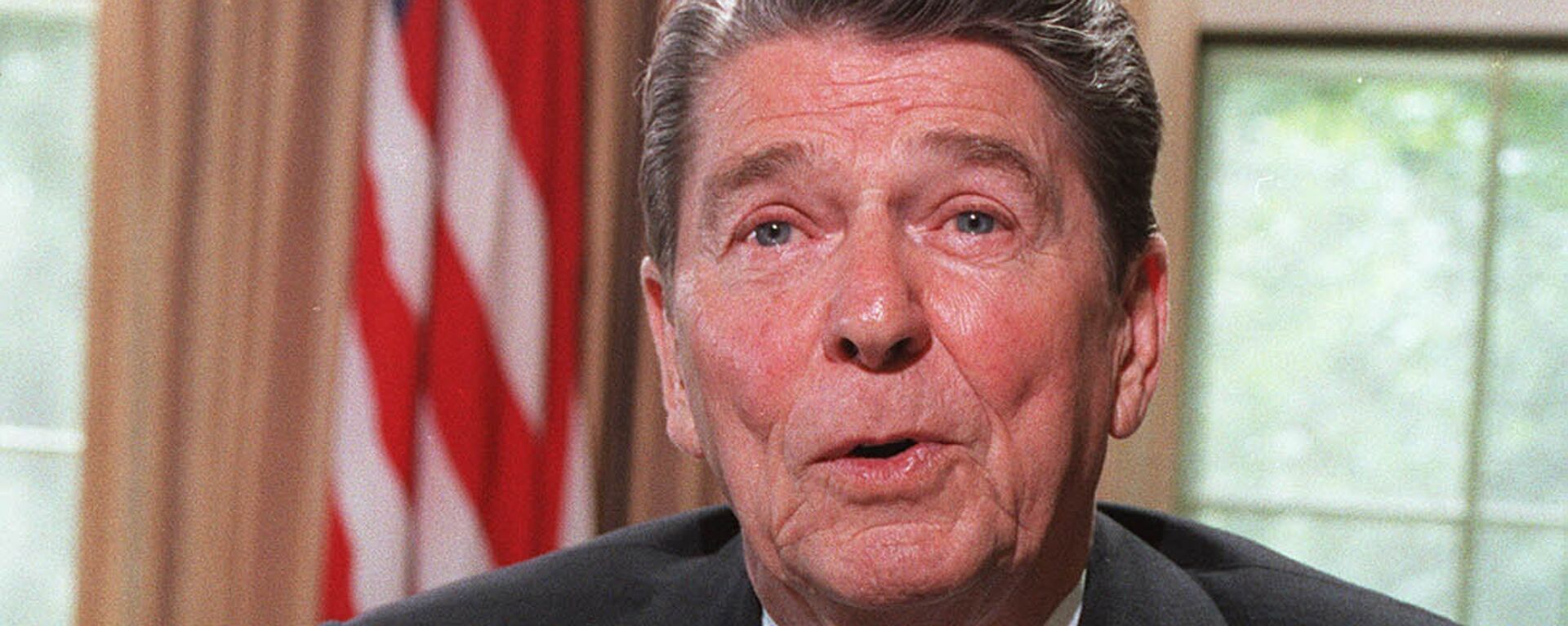https://sputnikglobe.com/20221220/blast-from-past-how-cia-and-kgb-played-catch--swap-games-1105651270.html
Blast From Past: How CIA and KGB Played Catch & Swap Games
Blast From Past: How CIA and KGB Played Catch & Swap Games
Sputnik International
The US is intensifying efforts to swap former US Marine Paul Whelan, convicted for espionage in Russia, as per the American press. The spy case evokes strong... 20.12.2022, Sputnik International
2022-12-20T18:58+0000
2022-12-20T18:58+0000
2022-12-21T06:50+0000
americas
us
history
spy
kgb
cia
cold war
paul whelan
swap
russia
https://cdn1.img.sputnikglobe.com/img/102765/63/1027656307_0:220:4637:2828_1920x0_80_0_0_6221ef9793a2d0f186b7b7c7f6c48d10.jpg
It is believed that the case would never have gone public unless the US arrested three Soviet employees of the United Nations on May 20, 1978, in New Jersey over allegedly paying $16,000 for secret Navy antisubmarine warfare documents.The three were taken into custody in a shopping center in Woodbridge, after a US Navy officer – who had been cooperating with the FBI – dropped a film of classified documents in a pickup spot. The aforementioned officer never had a face-to-face meeting with the "alleged spies," but the US press claimed that the FBI had managed to identify them. One of the Soviet UN employees had diplomatic immunity; the other two did not, and were detained while awaiting trial. The US media acknowledged at the time that the arrests seemed "certain to heighten strained relations between the United States and the Soviet Union."The alleged spy scandal prompted an asymmetric response from the USSR. The crux of the matter was that the two Cold War rivals maintained a sort of a gentleman's agreement and largely avoided discussing their intelligence tit-for-tat in the mediasphere. The US media story about the alleged Soviet spies appeared to be in breach of this "tacit accord."CIA Agent Martha Peterson ExposedIn June (July) 1978, Soviet newspaper Izvestia dropped a bombshell by exposing CIA agent Martha Peterson, who was caught red-handed by the KGB in Moscow in July 1977 when she planted a cache of spy equipment, including ampules of a lethal poison, on a bridge over the Moscow River. The article also contained a photo of Peterson in interrogation behind a table covered with her spy paraphernalia.The article went on to reveal how Peterson stopped her car in a place that was dimly lit, changed her clothes, got on a city bus, then rode the subway, then took a taxi, and finally arrived at the Krasnoluzhsky Bridge. There, the vice-consul put a stone in a porthole on the arch – "an ordinary cobblestone, which in the villages they put in a bathhouse so that the heat lasts longer." At that very moment, KGB agents grabbed and detained her.It turned out that the spy cache contained poison. What's more, the same poison had been sent by the CIA to the Soviet Union before and had been used to kill at least one Soviet citizen who threatened to expose a US mole in Moscow. "The question arises," Semenov wrote. "Who will answer for the death of this person? Only the spy to whom Peterson gave the poison? Or the CIA? And, if that is the case, who precisely?"The Soviet government expelled Peterson, who had diplomatic immunity, and did not make a fuss about the case at the request of Washington. However, the May 1978 incident in New Jersey untied Moscow's hands. The Soviet newspaper specified that it had made the case public because of "the new round of anti‐Soviet hysteria" in the United States.Semenov specifically referred to the case involving the two detained Soviet citizens in New Jersey, stressing that by all accounts, it appeared to be a set-up."The prosecution witness was a Navy officer, an FBI agent who was dispatched provocatively to the Soviet citizens," he wrote. "Rough work, I would say, a police state in its purest form."Semenov insisted that the irrefutable case involving Peterson was contrasted with a kind of "theatrical buffoonery" by the FBI, which was aimed at disrupting Soviet-American relations.The US media immediately reacted to Izvestia's story by trying to downplay the bombshell. Still, the Jimmy Carter administration had to admit that Peterson, 33, was a CIA employee who had used the United States Embassy in Moscow as a cover.US newspapers went into a full damage control mode and attempted to sweeten the pill: they portrayed "Marty" Peterson as a mixture of the ladylike and quite glamorous "girl-next-door" and a "mysterious woman" with a green-belt in Taekwondo, who was "caught up in the general heightening of tensions" between Moscow and Washington. However, the efforts to glorify the busted American spook paled in comparison with the "cloak-and-dagger" story broken by the Soviet newspaper.CIA & TrigonLater, Martha Peterson went public with her CIA background and secret mission in Moscow: in 2012, she published her memoir "The Widow Spy: My CIA Journey from the Jungles of Laos to Prison in Moscow." In the book, Peterson described the Cold War spy operation in Moscow. Even though the US media has tried to depict the CIA operation, involving Peterson and her colleagues, as a success story, the truth of the matter is that the KGB outsmarted their American counterparts.The story was used by Soviet filmmakers to make a series titled "TASS is Authorized to Declare" (1984). The series is based on Yulian Semenov's novel which he wrote, using documentary and video evidence, soon after the Soviets made Peterson's failure public. Following the collapse of the USSR, participants of counter-intelligence operations against the CIA also shared their accounts of events.The story actually began in 1974 in Bogota, Colombia, where the CIA managed to catch Soviet diplomat Aleksandr Ogorodnik in a honey trap. At the time, Ogorodnik was having an affair with a Colombian Institute of Culture employee, Pilar Suarez Barcala, who was allegedly collaborating with the US intelligence service.Their intimate relations were reportedly filmed by the CIA and shown to Ogorodnik during a recruiting conversation. For fear of ruining his career, the Soviet diplomat agreed to cooperate with the CIA under the codename Trigon. Having returned to Moscow, Ogorodnik began work as the second secretary at the American Department of the Ministry of Foreign Affairs Directorate for Foreign Policy Planning.For two and a half years, Trigon was an informant for the CIA station in Moscow. It is assumed that at some point, his bride Olga Serova started to suspect him of being a US spy. She unexpectedly died of the flu. It is believed that he poisoned her with the deadly substance smuggled by the CIA.The Soviet intelligence service started to suspect Ogorodnik early on. They received a tip about US intelligence approaching an unidentified Russian diplomat in Bogota. Some Western observers presume that Ogorodnik was exposed by Czech intelligence illegal Karl Koecher.The KGB watched Trigon closely and saw how he left secret information in special "containers" (disguised as a pack of milk or a branch) in Victory Park in Moscow. They also secretly searched the spy's apartment, at No. 2/1 on Krasnopresnenskaya Embankment. On the evening of June 21, 1977, Ogorodnik was arrested. Alas, the KGB missed the moment when Trigon, who agreed to cooperate with the prosecution, swallowed a deadly ampule.KGB's Virtuosic Operational GameSoviet secret agents now faced a serious challenge: they needed Ogorodnik alive to catch their CIA counterparts red-handed.However, they solved this dilemma quite elegantly: the KGB invited one of the best make-up artists of Mosfilm – the Soviet Hollywood – to make an Ogorodnik "double" from an intelligence officer. The Mosfilm specialist guaranteed that no one would notice the difference from a distance of at least 20 meters. Given that Ogorodnik's curators never approached him closer than that, it could work. Reportedly, the Soviet officer had been pretending to be Trigon for three whole weeks.As a result of the KGB's operational game, the CIA scheduled another secret encounter with Ogorodnik at the Krasnoluzhsky Bridge. It was planned that CIA agent Martha Peterson would drop a package disguised as a stone there and Ogorodnik would pick it up after she left the bridge.The rest was described by the Izvestia newspaper. While Martha Peterson changed her clothes and transport to get to the infamous bridge, she had no idea that around a hundred KGB officers were keeping an eye on her movements, with some of them waiting for her at the hiding place.The KGB's successful operation resulted in the exposure of both Peterson and a number of her American colleagues in Moscow. The publication of the story became a sensation at that time both in the US and the USSR. The two Soviet UN employees who were detained in New Jersey in May 1978 were convicted of espionage in the US and even got a 50-year sentence each, but soon they were swapped for five Soviet dissidents. Even at the height of the Cold War standoff, the US and Russia found ways to reach mutually beneficial solutions.
https://sputnikglobe.com/20221209/why-didnt-biden-swap-paul-whelan-convicted-for-espionage-in-russia-1105282503.html
https://sputnikglobe.com/20210718/reagans-adviser-reveals-how-kgb-officer-helped-her-get-to-ussr-in-1983-1083409298.html
https://sputnikglobe.com/20200919/kgb-spetsnaz-vet-recalls-soviet-spymasters-unique-methods-against-western-counterintelligence-1080514779.html
americas
russia
Sputnik International
feedback@sputniknews.com
+74956456601
MIA „Rossiya Segodnya“
2022
News
en_EN
Sputnik International
feedback@sputniknews.com
+74956456601
MIA „Rossiya Segodnya“
Sputnik International
feedback@sputniknews.com
+74956456601
MIA „Rossiya Segodnya“
paul whelan, cold war, soviet un employees, swap, spy, cia, kgb, operational game, intelligence service, surveillance, martha peterson
paul whelan, cold war, soviet un employees, swap, spy, cia, kgb, operational game, intelligence service, surveillance, martha peterson
Blast From Past: How CIA and KGB Played Catch & Swap Games
18:58 GMT 20.12.2022 (Updated: 06:50 GMT 21.12.2022) The US is intensifying efforts to swap former US Marine Paul Whelan, convicted for espionage in Russia, as per the American press. The spy case evokes strong memories of one mano-a-mano between American and Soviet intelligence agencies in the not-so-distant past.
It is believed that the case would never have gone public unless the US arrested three Soviet employees of the United Nations on May 20, 1978, in New Jersey over allegedly paying $16,000 for secret Navy antisubmarine warfare documents.
The three were taken into custody in a shopping center in Woodbridge, after a US Navy officer – who had been cooperating with the FBI – dropped a film of classified documents in a pickup spot. The aforementioned officer never had a face-to-face meeting with the "alleged spies," but the US press claimed that the FBI had managed to identify them. One of the Soviet UN employees had diplomatic immunity; the other two did not, and were detained while awaiting trial. The US media acknowledged at the time that the arrests seemed "certain to heighten strained relations between the United States and the Soviet Union."
The alleged spy scandal prompted an asymmetric response from the USSR. The crux of the matter was that the two Cold War rivals maintained a sort of a gentleman's agreement and largely avoided discussing their intelligence tit-for-tat in the mediasphere. The US media story about the alleged Soviet spies appeared to be in breach of this "tacit accord."
CIA Agent Martha Peterson Exposed
In June (July) 1978, Soviet newspaper Izvestia dropped a bombshell by exposing CIA agent Martha Peterson, who was caught red-handed by the KGB in Moscow in July 1977 when she planted a cache of spy equipment, including ampules of a lethal poison, on a bridge over the Moscow River. The article also contained a photo of Peterson in interrogation behind a table covered with her spy paraphernalia.
"Imagine a young diplomat, a smiling girl who speaks foreign languages, who works as vice-consul of one of the countries in Moscow," wrote stellar Soviet investigative journalist and novelist Yulian Semenov. "Imagine this pretty girl in the evening when she got into her car and drove into the city center. Just what did our heroine do there? Visit the theater? Friends? No."
The article went on to reveal how Peterson stopped her car in a place that was dimly lit, changed her clothes, got on a city bus, then rode the subway, then took a taxi, and finally arrived at the Krasnoluzhsky Bridge. There, the vice-consul put a stone in a porthole on the arch – "an ordinary cobblestone, which in the villages they put in a bathhouse so that the heat lasts longer." At that very moment, KGB agents grabbed and detained her.
"Inside the 'cobblestone' lay ordinary espionage accessories - cameras, gold, a questionnaire, money, instructions, in a word, everything that happens in such cases. However, there were objects in the drop cache that were perplexing - small inconspicuous black ampules. What’s this?" the article went on.
It turned out that the spy cache contained poison. What's more, the same poison had been sent by the CIA to the Soviet Union before and had been used to kill at least one Soviet citizen who threatened to expose a US mole in Moscow. "The question arises," Semenov wrote. "Who will answer for the death of this person? Only the spy to whom Peterson gave the poison? Or the CIA? And, if that is the case, who precisely?"

9 December 2022, 17:57 GMT
The Soviet government expelled Peterson, who had diplomatic immunity, and did not make a fuss about the case at the request of Washington. However, the May 1978 incident in New Jersey untied Moscow's hands. The Soviet newspaper specified that it had made the case public because of "the new round of anti‐Soviet hysteria" in the United States.
Semenov specifically referred to the case involving the two detained Soviet citizens in New Jersey, stressing that by all accounts, it appeared to be a set-up.
"The prosecution witness was a Navy officer, an FBI agent who was dispatched provocatively to the Soviet citizens," he wrote. "Rough work, I would say, a police state in its purest form."
Semenov insisted that the irrefutable case involving Peterson was contrasted with a kind of "theatrical buffoonery" by the FBI, which was aimed at disrupting Soviet-American relations.
The US media immediately reacted to Izvestia's story by trying to downplay the bombshell. Still, the Jimmy Carter administration had to admit that Peterson, 33, was a CIA employee who had used the United States Embassy in Moscow as a cover.
US newspapers went into a full damage control mode and attempted to sweeten the pill: they portrayed "Marty" Peterson as a mixture of the ladylike and quite glamorous "girl-next-door" and a "mysterious woman" with a green-belt in Taekwondo, who was "caught up in the general heightening of tensions" between Moscow and Washington. However, the efforts to glorify the busted American spook paled in comparison with the "cloak-and-dagger" story broken by the Soviet newspaper.
Later, Martha Peterson
went public with her CIA background and secret mission in Moscow: in 2012, she published her memoir
"The Widow Spy: My CIA Journey from the Jungles of Laos to Prison in Moscow." In the book, Peterson described the Cold War spy operation in Moscow. Even though the US media has tried to depict the CIA operation, involving Peterson and her colleagues, as a success story, the truth of the matter is that the KGB outsmarted their American counterparts.
The story was used by Soviet filmmakers to make a series titled "TASS is Authorized to Declare" (1984). The series is based on Yulian Semenov's novel which he wrote, using documentary and video evidence, soon after the Soviets made Peterson's failure public. Following the collapse of the USSR, participants of counter-intelligence operations against the CIA also shared their accounts of events.
The story actually began in 1974 in Bogota, Colombia, where the CIA managed to catch Soviet diplomat Aleksandr Ogorodnik in a honey trap. At the time, Ogorodnik was having an affair with a Colombian Institute of Culture employee, Pilar Suarez Barcala, who was allegedly collaborating with the US intelligence service.
Their intimate relations were reportedly filmed by the CIA and shown to Ogorodnik during a recruiting conversation. For fear of ruining his career, the Soviet diplomat agreed to cooperate with the CIA under the codename Trigon. Having returned to Moscow, Ogorodnik began work as the second secretary at the American Department of the Ministry of Foreign Affairs Directorate for Foreign Policy Planning.
For two and a half years, Trigon was an informant for the CIA station in Moscow. It is assumed that at some point, his bride Olga Serova started to suspect him of being a US spy. She unexpectedly died of the flu. It is believed that he poisoned her with the deadly substance smuggled by the CIA.
The Soviet intelligence service started to suspect Ogorodnik early on. They received a tip about US intelligence approaching an unidentified Russian diplomat in Bogota. Some Western observers presume that Ogorodnik was exposed by Czech intelligence illegal Karl Koecher.
The KGB watched Trigon closely and saw how he left secret information in special "containers" (disguised as a pack of milk or a branch) in Victory Park in Moscow. They also secretly searched the spy's apartment, at No. 2/1 on Krasnopresnenskaya Embankment. On the evening of June 21, 1977, Ogorodnik was arrested. Alas, the KGB missed the moment when Trigon, who agreed to cooperate with the prosecution, swallowed a deadly ampule.
![Federal Security Service, formerly called the State Security Committee [KGB], on Moscow's Lubyanka Square. (File) Federal Security Service, formerly called the State Security Committee [KGB], on Moscow's Lubyanka Square. (File) - Sputnik International, 1920, 19.09.2020](https://cdn1.img.sputnikglobe.com/img/104543/66/1045436653_0:407:3085:1641_1920x0_80_0_0_f98b61855f98c15e10542ef94770ba09.jpg)
19 September 2020, 16:33 GMT
KGB's Virtuosic Operational Game
Soviet secret agents now faced a serious challenge: they needed Ogorodnik alive to catch their CIA counterparts red-handed.
However, they solved this dilemma quite elegantly: the KGB invited one of the best make-up artists of Mosfilm – the Soviet Hollywood – to make an Ogorodnik "double" from an intelligence officer.
The Mosfilm specialist guaranteed that no one would notice the difference from a distance of at least 20 meters. Given that Ogorodnik's curators never approached him closer than that, it could work. Reportedly, the Soviet officer had been pretending to be Trigon for three whole weeks.
As a result of
the KGB's operational game, the CIA scheduled another secret encounter with Ogorodnik at the Krasnoluzhsky Bridge. It was planned that CIA agent Martha Peterson would drop a package disguised as a stone there and Ogorodnik would pick it up after she left the bridge.
The rest was described by the Izvestia newspaper. While Martha Peterson changed her clothes and transport to get to the infamous bridge, she had no idea that around a hundred KGB officers were keeping an eye on her movements, with some of them waiting for her at the hiding place.
The KGB's successful operation resulted in the exposure of both Peterson and a number of her American colleagues in Moscow. The publication of the story became a sensation at that time both in the US and the USSR. The two Soviet UN employees who were detained in New Jersey in May 1978 were convicted of espionage in the US and even got a 50-year sentence each, but soon they were swapped for five Soviet dissidents. Even at the height of the Cold War standoff, the US and Russia found ways to reach mutually beneficial solutions.





![Federal Security Service, formerly called the State Security Committee [KGB], on Moscow's Lubyanka Square. (File) Federal Security Service, formerly called the State Security Committee [KGB], on Moscow's Lubyanka Square. (File) - Sputnik International, 1920, 19.09.2020](https://cdn1.img.sputnikglobe.com/img/104543/66/1045436653_0:407:3085:1641_1920x0_80_0_0_f98b61855f98c15e10542ef94770ba09.jpg)
